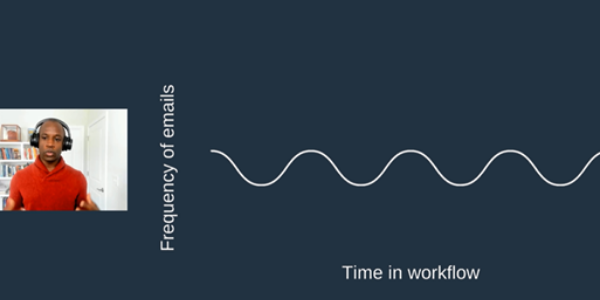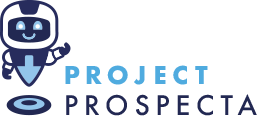Mike Tatum (Demand Generation Manager at Momentive) laid out a lead nurturing workflow architecture at INBOUND2021. He kept it simple and showed how simple can be powerful. The workflows he sketched out locked into the buyer's journey and had a natural way of guiding the lead to the next stage.
If you are thinking about using marketing automation the following notes will help you understand good workflow strategy and get started building out your sequence.
Mike started by describing what a workflow is. Simply, it is the logic of “if someone does this, I want this to happen next”. In this case, it is in the context of an automated email sequence. CRM’s and email platforms such as HubSpot, Mail Chimp, and Pardot have this functionality.
Who becomes part of the workflow? The workflow starts when a lead hits an enrolment trigger such as downloading an eBook, being a member of one of your marketing lists, or (in the construction industry) being listed on Barbour ABI for contact by third parties.
After they have triggered the workflow what happens next? Do they get an email the next day? Or 2 days after? What do you send them? These are all questions you can answer and by doing so, build out your lead nurturing campaign.
He describes 2 different types of lead nurturing workflows: Campaign Workflows and Reengagement Workflows. The Campaign Workflow is triggered first. Then, leads who don’t achieve the goal of the campaign, move to a Re-engagement campaign.
The Campaign Workflow
The Campaign Workflows is triggered by an engagement like a form submission, digital event, or anything else you use to generate leads. The workflow should be straightforward. Not an intricately branching sequence of “if”-“then”s. Instead of sending on a consistent delay, he recommends a decay model, where emails are sent every 2 days, then every 3, then every 4, for example. This allows you to be aggressive initially to make the most of their awareness, but then taper off to give them space. The goal of this workflow is to get them to the next stage of the funnel.
If they don’t reach the next stage of the buyer's journey, then you enroll them in the Reengagement Workflows.
The Reengagement Workflow
Leads who don’t achieve the goal of the Campaign Workflow are added to the re-engagement workflow. Or, if their lead status is set as “bad timing” or “no response” by the SDR’s they can be added to it. This way leads who weren’t responsive still get followed up with.
This workflow can be a bit more intricate.
The frequency of the emails should increase and decrease. This builds interest to a boiling point but then cools off before it becomes too frequent to keep people from unsubscribing. This pattern is repeated until hopefully they do engage and enter the Campaign Workflow again.

The goal of the Reengagement Workflow is to get them to engage with a piece of content one stage higher in the buyer's journey. And to do this over a lengthy period of time. This gives you more opportunities to connect and puts less pressure on generating net new leads.
Mike has seen this lead to:
- 1.3 million dollars in lifetime value every single month
- $12 in pipeline for every email sent
- Improved email engagement to achieve a 4% click rate
Mike has done this by making sure the campaigns are in step with where the leads are at in the buyer's journey, giving them what they need at that point in time, and making sure they have a good experience.
Why it works
It’s easy to manage. The logic is clear and easily understood.
It’s flexible enough to accommodate any buying journey: short or long.
You can quickly iterate on frequency and CTAs to continuously improve it. Testing value propositions, hooks, and images are all easily done in this environment.
Q&A
Q: What if I don’t have much content and few leads?
A: That’s not a problem. You can make workflows for a company that doesn’t have a lot of content or many leads. Make your workflows longer to account for the low number of leads. Break down big pieces of content if you don’t have much material.
One eBook could become a cheat sheet, blog post, and smaller form content.
Q: Do you have email sequences go alongside sales cadences?
A: Yes, until they reach sales qualified lead or opportunity.
They are not in conflict. If the sales team is sending a series of automated emails and making follow-up calls then the marketing emails only reinforce the value propositions and accelerate the deals.
They’re getting the things they need to make this decision. Salespeople are reaching out, having conversations, and answering questions. And we’re sending out the full value proposition of the product
Q: Do you use paid social alongside this?
A: Yes. Use workflows to put leads in audiences for social media. A workflow doesn’t have to be just email.
Q: Do people get hit with the same messaging if they re-enter the same campaign?
A: Leads are in Workflow A then Workflow B. So when then they’re in B change A so the journey is different. Analyze the content and edit it to make it fresh.
Q: Do you target unengaged leads?
A: Yes, with very clickable content like:
- A poll: “What channel is driving the most engagement for your business?"
- A prompt to update preference
- A really popular blog post
Thanks, Mike for a hugely helpful time! Excited to hear more from you in the future.
Project Prospecta builds workflows for companies selling to the construction industry. If you want help creating a revenue-generating lead nurturing workflow book a chat. 


